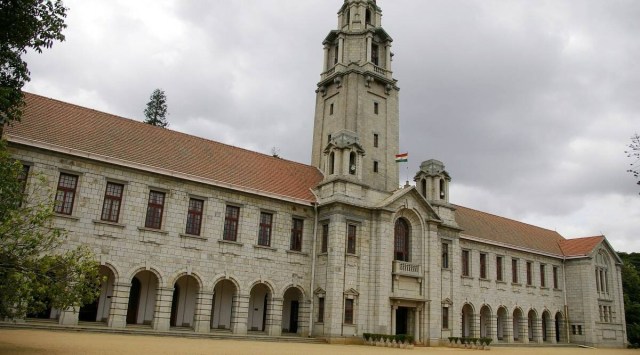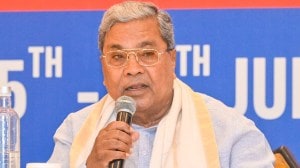Stay updated with the latest - Click here to follow us on Instagram
IISc researchers develop model to study impact of lightning strikes on aircraft
Udaya Kumar, a professor of electrical engineering, has been studying lightning protection for the past few years.
 The first step in protecting aircraft from lightning is identifying the most common parts where lightning can hit. (Express Photo/ Representative Image)
The first step in protecting aircraft from lightning is identifying the most common parts where lightning can hit. (Express Photo/ Representative Image) Researchers at Bengaluru’s Indian Institute of Science (IISc) announced Thursday that they had developed a model to study how lightning strikes aircraft and that insights from the study would be used to design protective measures for craft.
Udaya Kumar, a professor at the IISC’s electrical engineering department, said, “Lightning strikes can damage the aircraft surface and lead to temporary disruptions in electrical and electronic systems or even cause permanent damage, and in extreme cases, cause ignition of the fuel-air mixture around the engine, leading to an explosion. Usually, an aircraft gets struck by lightning once every 1,000 hours. There have been a lot of incidents in the last century where things have been very catastrophic.”
The first step in protecting aircraft from lightning is identifying the most common parts where lightning can hit. Kumar and his team realised that current approaches were grossly oversimplified, and set out to develop a more comprehensive computational model.
Kumar’s lab has been studying lightning protection for the past few years.
“They have developed unique models that have addressed several long-standing issues of lightning current evolution. In the past, he was also involved in the design of a lightning protective system for Indian satellite launch pads and conducted research on different protective schemes. In the current study as well as in ongoing work, they have focused on modelling how lightning impacts aircraft, in order to develop suitable protective measures,” the IISc said in a media release.
In the usual downward cloud-to-ground lightning, a stepped leader (initial lightning stroke) forms towards the ground. The researchers have shown that aircraft at higher altitudes have a greater affinity for lightning strikes. The model developed by the IISc team is applied to two different aircraft geometries: a DC10 passenger aircraft and a standard dynamics model (SDM) fighter aircraft.
“Moreover, the aircraft is not perfectly parallel to the ground during take-off and landing, and the model is able to simulate how these changes in orientation can affect the electric field. The role of atmospheric conditions such as humidity and air pressure are also taken into account in the model. In ongoing studies, the team is planning to investigate several related issues including the local changes around the aircraft during the lightning strike evolution,” the IISc said.
In addition, they are investigating disruptions to the internal electrical equipment when struck by lightning. “Kumar’s lab has also carried out a first-of-its-kind experiment on a small military aircraft by injecting it with enormous amounts of current–intended to emulate lightning discharge– and by collecting electric field data from inside the craft,” the IISc added.







